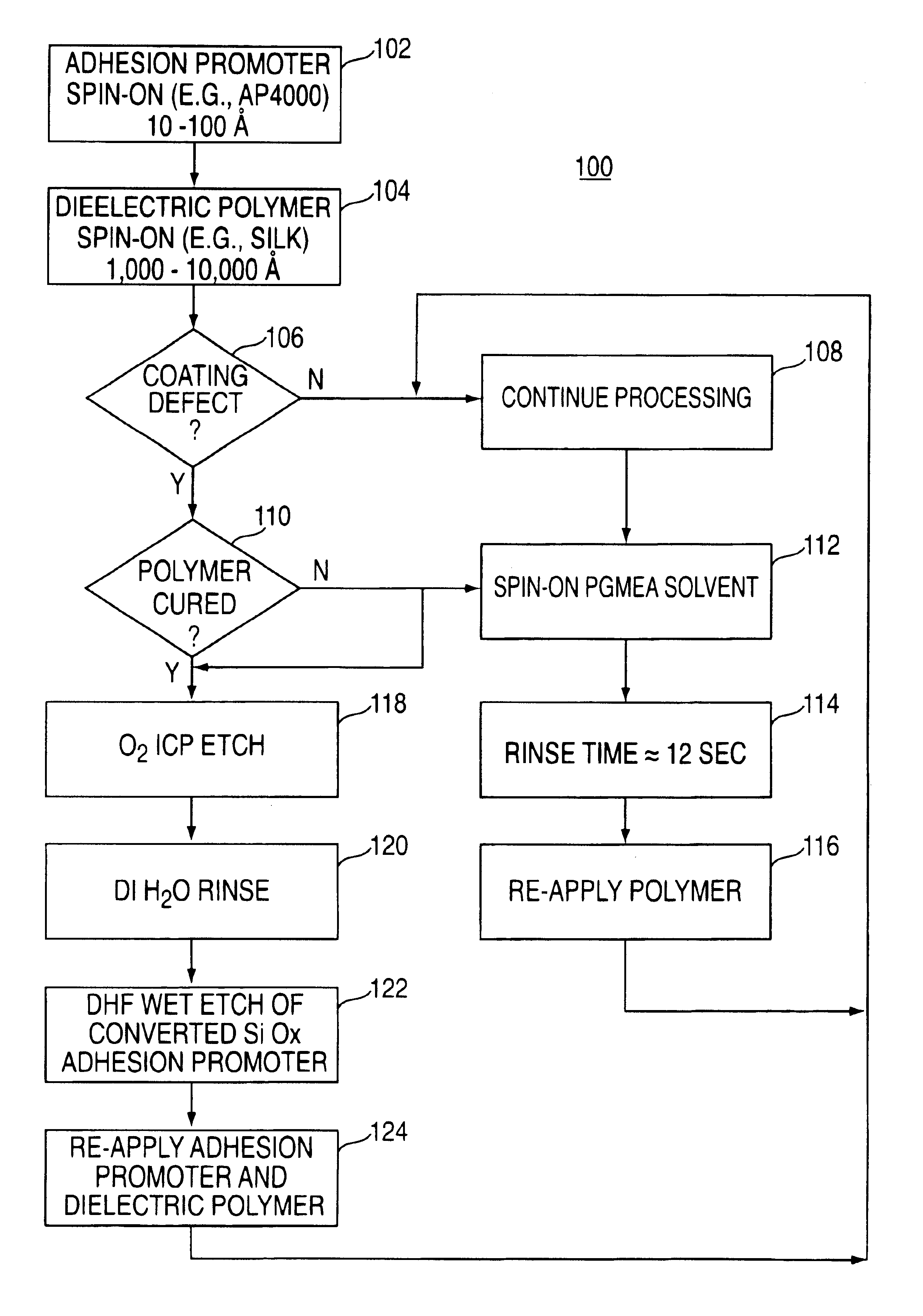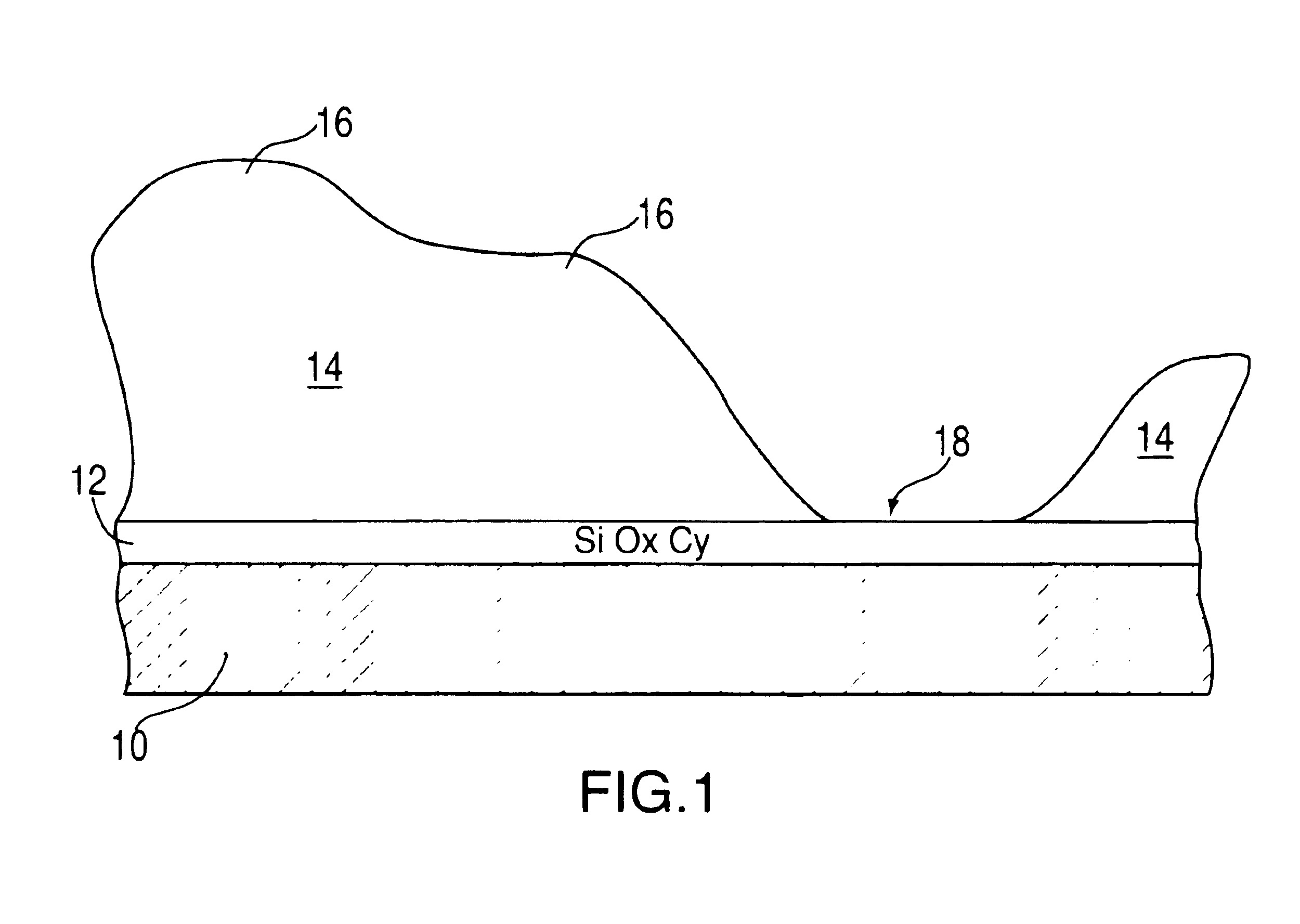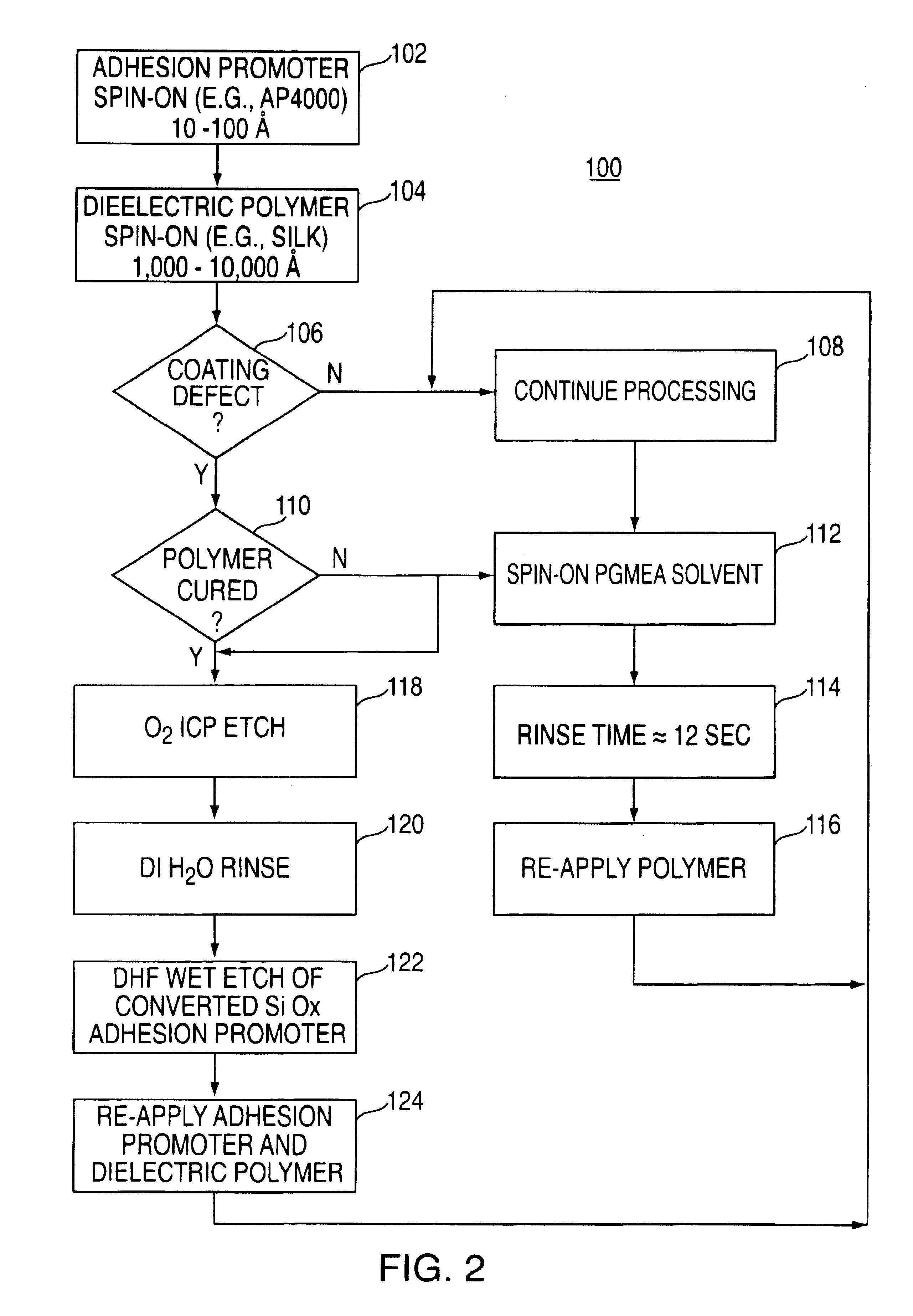Method for reworking low-k polymers used in semiconductor structures
- Summary
- Abstract
- Description
- Claims
- Application Information
AI Technical Summary
Problems solved by technology
Method used
Image
Examples
Embodiment Construction
IG. 4 illustrates the removal of the oxidized adhesion promoter layer using a DHF wet etch; and
[0012]FIG. 5 illustrates the application of a new adhesion promoter layer and dielectric layer following the removal etch process(es).
DETAILED DESCRIPTION
[0013]Referring initially to FIG. 1, there is shown a misapplied layer of dielectric polymer to a semiconductor wafer. An underlying film of, for example, silicon nitride 10 (SiN) formed upon a substrate (not shown) has a layer 12 of adhesion promoter applied thereon. One example of such an adhesion promoter is AP4000, which is also manufactured by The Dow Chemical Company. The adhesion promoter layer 12 has a general chemical composition of SiOxCy, and is applied at a thickness which may range from about 5 to about 150 angstroms (Å). Then, a low-k dielectric spin-on polymer film 14 (such as SiLK®) is applied upon the adhesion promoter layer 12.
[0014]In the normal application of the SiLK® polymer, it is desired that the resulting dielectr...
PUM
| Property | Measurement | Unit |
|---|---|---|
| Time | aaaaa | aaaaa |
| Dielectric polarization enthalpy | aaaaa | aaaaa |
| Composition | aaaaa | aaaaa |
Abstract
Description
Claims
Application Information
 Login to view more
Login to view more - R&D Engineer
- R&D Manager
- IP Professional
- Industry Leading Data Capabilities
- Powerful AI technology
- Patent DNA Extraction
Browse by: Latest US Patents, China's latest patents, Technical Efficacy Thesaurus, Application Domain, Technology Topic.
© 2024 PatSnap. All rights reserved.Legal|Privacy policy|Modern Slavery Act Transparency Statement|Sitemap



